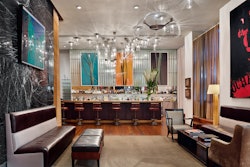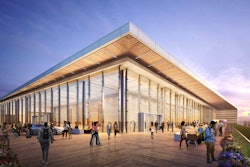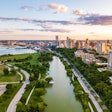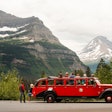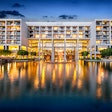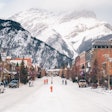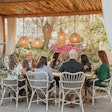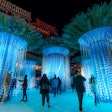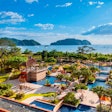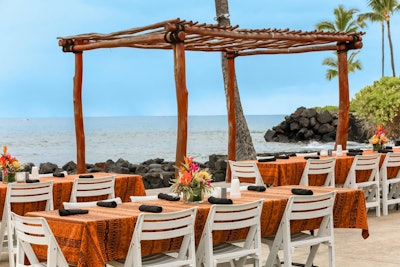
What does it take to create a successful, engaging, and celebratory event in Hawai'i?
From cultural exchanges at opening night ceremonies to sourcing locally raised and harvested ingredients, to respectfully experiencing our 50th state from the land, sea, and air, planners looking to create a meaningful meeting in Hawai'i can look to the concept of malama (to care for, protect, and preserve) to guide them on their quest.
As early as 2021, when the effects of the pandemic began to wane, many of those who were eager to travel again headed to Hawai'i, resulting in an unanticipated onslaught. Maui, in particular, saw an influx of visitors; in July 2022, the Hawaiian island welcomed 35,000 tourists every day, surpassing its pre-pandemic levels. The effect saw residents experiencing water shortages and hotels being overwhelmed. A lack of car rentals led to visitors renting moving vans, and restaurants had to deal with up to 2-hour wait times for tables.
In response to the island-wide effect of “overtourism,” the Hawai'i Tourism Authority (HTA), in partnership with the Hawai'i Visitors and Convention Bureau (HVCB), initiated the Malama Hawaii campaign.
“Coming out of COVID, the original thought was, ‘Let’s get heads in beds,’” says Kainoa Daines, senior director of brand for the HVCB. “But it quickly became apparent that wasn’t the right approach. What we were really looking for were mindful travelers—visitors who would respect our culture and environment and look for ways they could connect with islanders on a meaningful level.”
Carin Martens is director of sales and marketing for Insider Experience (IE), a full-service DMC specializing in incentive programs with over 20 years of experience operating in the Hawaiian Islands.
 For a medical device company, Insider Experience planned a hike through a majestic Hawaiian rainforest.Photo: Courtesy of Insider Experience
For a medical device company, Insider Experience planned a hike through a majestic Hawaiian rainforest.Photo: Courtesy of Insider Experience
“Hawaii is a small-knit community, so connections run deep," she says. "Some of the many ways we work to incorporate malama into our itineraries are by encouraging clients to purchase gifting options from local companies (such as sea salts or reef-safe sunblock), considering new venues to create culinary adventures and promoting sustainable food practices, or partnering with eco-friendly suppliers to cut the use of nonrecyclables.”
By way of examples, Martens points to some of the activities IE has coordinated. “For an energy company, we [brought in] astronomers from a local observatory to star gaze and learn how the Hawaiians used navigation by the stars while they rode the open ocean and determined the best times to farm and fish," she explains. "The next day, we included a traditional outrigger canoe ride to explore the ocean and capture views of local marine life.
 Insider Experience has organized lei-making classes for groups.Photo: Courtesy of Insider Experience
Insider Experience has organized lei-making classes for groups.Photo: Courtesy of Insider Experience
She continues, “For a medical device company, we planned a hike through a majestic Hawaiian rainforest. This was followed by a picnic luncheon with fresh fruits and ended with artisan-led hat- and lei-making classes. And for a gas company gathering, we curated a private beach event that encompassed a fisherman who caught, cut, and prepared fresh fish poke for the group.”
HVCB’s Daines points to an activity that provides immediate, noticeable results—and benefits the local flora and fauna: a beach cleanup. In fact, this is the No. 1 activity for larger groups to the islands, as there’s easy access to area beaches and ample parking.
But volunteering can also take many other forms. “A group recently helped restore a rock wall at the bottom of a river as it enters the ocean," Daines says. "They pulled out invasive plants, cleared away debris, and helped restock the fishpond; in the process, they learned about ancient Hawaiian aquaculture.”
On the Big Island, meeting attendees will find Kamehameha the Great’s last royal residence. Listed on the National Register of Historic Places, the protected area sits next door to the King Kamehameha Kona Beach Resort, where Jake Franquez is director of operations. The property hosts events like the Kuauli Cultural Festival (a celebration of Hawai'i as a melting pot of Polynesian culture), currently acts as the official hotel for the IRONMAN Competition, and is home to the Kona Brewers Festival, with its unique Trash Fashion Show.
 In the lobby of King Kamehameha Kona Beach Resort, guests can view the extensive collection of works by noted Hawaiian painter Herb Kawainui Kāne, depicting various aspects of island life, as well as portraits of the royal family.Photo: Courtesy of King Kamehameha Kona Beach Resort
In the lobby of King Kamehameha Kona Beach Resort, guests can view the extensive collection of works by noted Hawaiian painter Herb Kawainui Kāne, depicting various aspects of island life, as well as portraits of the royal family.Photo: Courtesy of King Kamehameha Kona Beach Resort
Inside the hotel’s main lobby, guests can view the extensive collection of works by noted Hawaiian painter Herb Kawainui Kāne, depicting various aspects of island life, as well as portraits of the royal family. Additionally, there are artifacts on display (tools, weapons, clothing, an outrigger canoe) that highlight different aspects of the culture. Franquez notes that Island Breeze, which hosts the property’s luau, offers complimentary tours of the foyer and outdoor property.
Whether it’s experiencing a traditional imu (a pit-oven dug into the ground) at venues such as the Old Lahaina Luau on Maui, selecting a culturally significant property like the Bishop Museum on Oahu for a gathering, making a contribution to an island nonprofit, or volunteering your group’s time, there's a myriad of ways planners can incorporate the spirit of malama into their Hawaiian events.
More information can be found at:
https://www.eventsbyislandbreeze.com/historicaltour
https://www.gohawaii.com/voluntourism
https://www.gohawaii.com/malamaoffers
https://www.MeetHawaii.com/CSR/






